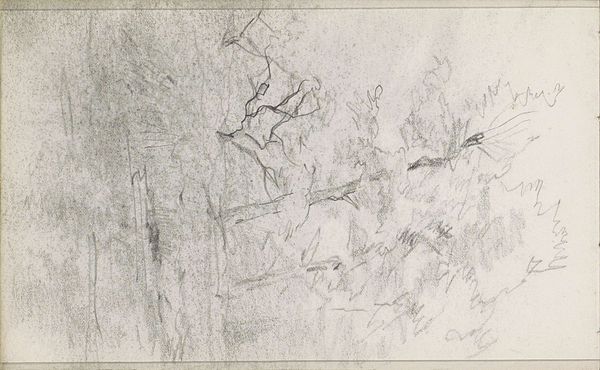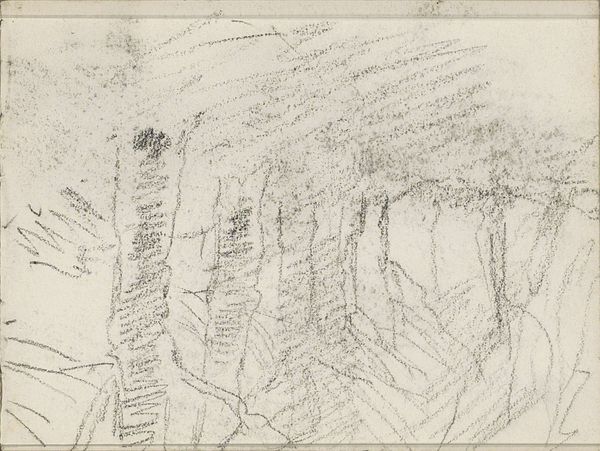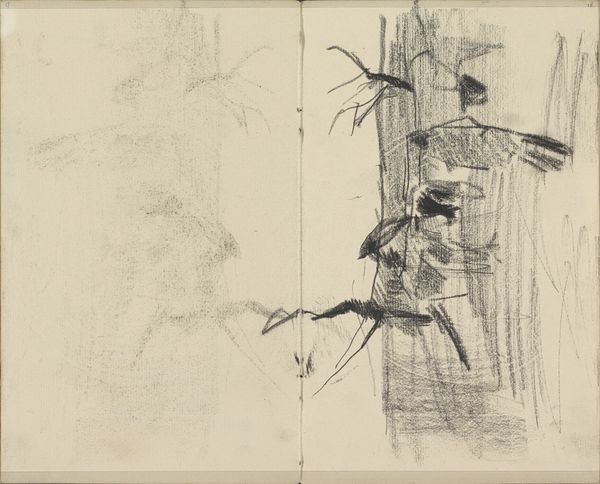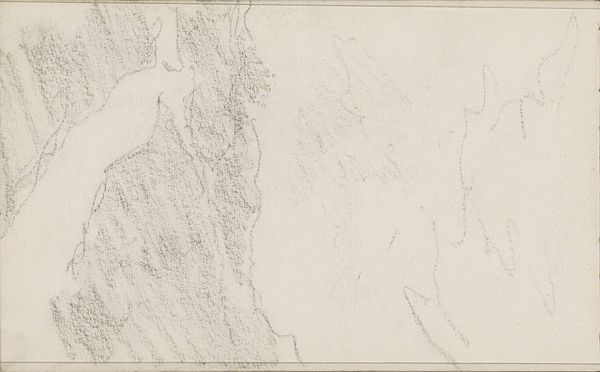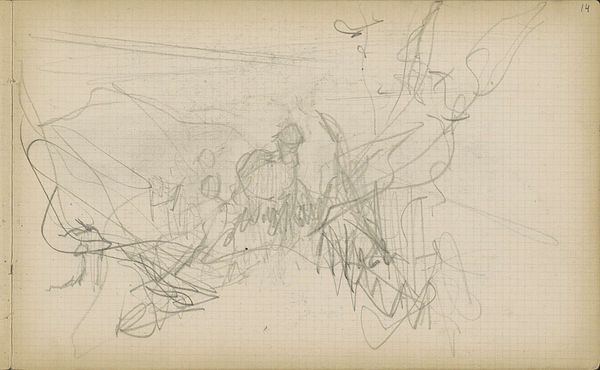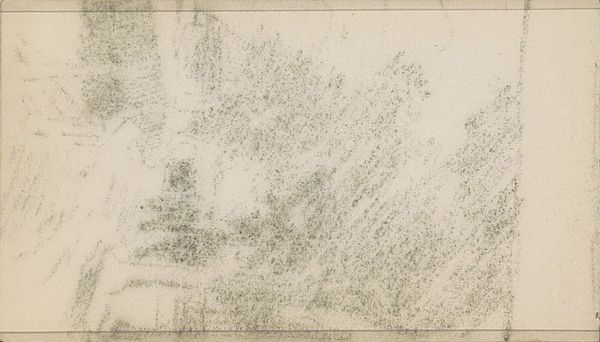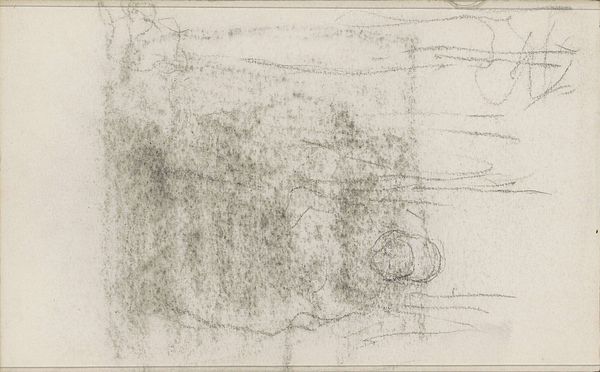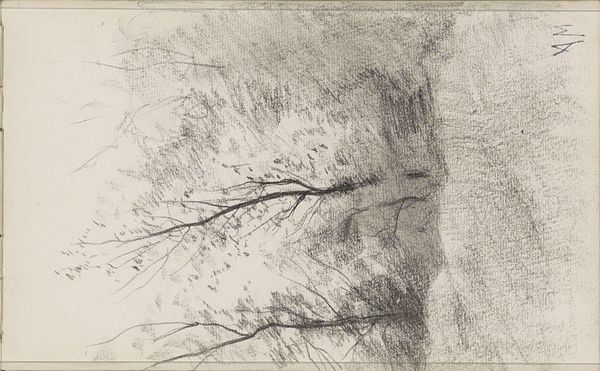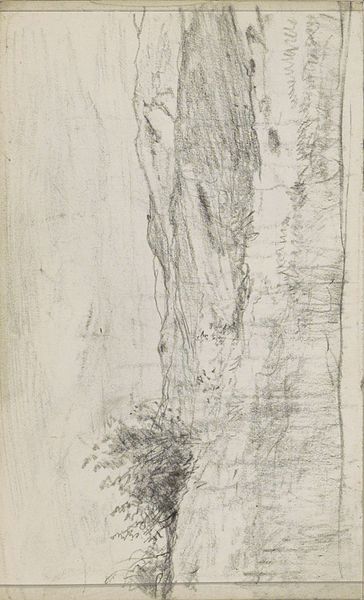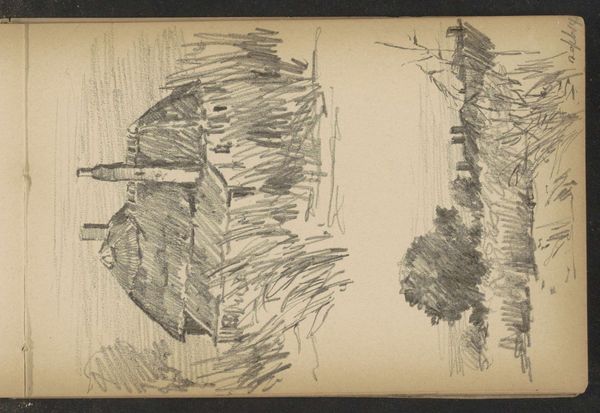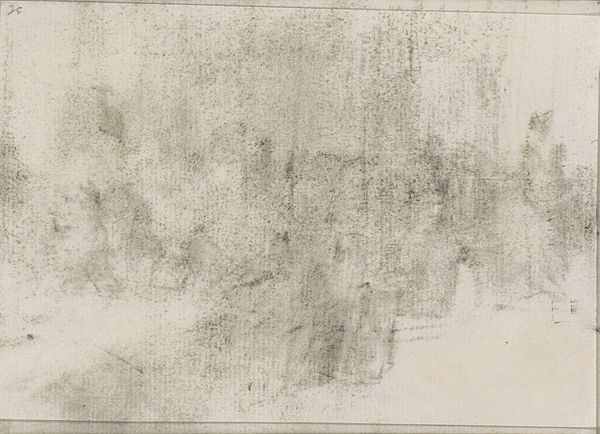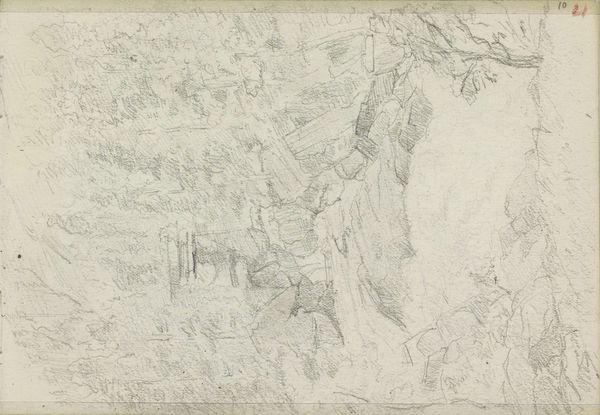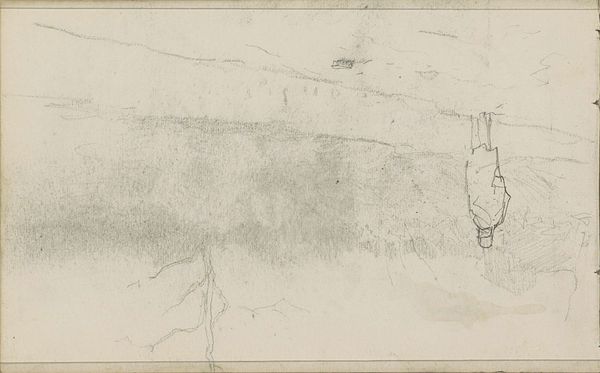
drawing, paper, pencil, graphite
#
drawing
#
landscape
#
paper
#
pencil
#
graphite
#
watercolor
Copyright: Rijks Museum: Open Domain
Editor: Here we have "Landscape with a Rider on a Path" by Willem Cornelis Rip, dating from around 1866 to 1922. It's a pencil and graphite drawing on paper. It feels unfinished, almost like a fleeting impression. What do you see in this piece, looking beyond the immediate landscape? Curator: I see a reflection of shifting social structures. The lone rider, almost swallowed by the landscape, speaks to me of individual agency within a system. The tentative lines, the "unfinished" quality you mention, hint at the impermanence of power and the ever-changing relationship between the individual and their environment. What does the landscape itself evoke for you? Editor: I guess I see a kind of anonymity. The rider isn't particularly defined, and the landscape seems somewhat generic. It could be anywhere. Curator: Precisely! This anonymity is crucial. Consider how land ownership and access were, and continue to be, sources of inequality. Who has the privilege to traverse this land freely? Who is excluded? Even this seemingly simple drawing invites us to contemplate power dynamics. Editor: That's a completely different way of looking at it than I initially thought! I was so focused on the aesthetics that I missed the potential social commentary. Curator: Art often holds multiple layers. What's important is to ask: who is represented, who is absent, and what stories are subtly being told about their relationships? Editor: I’ll definitely be keeping that in mind. It's fascinating how a simple sketch can hold so much historical and social weight. Curator: Indeed, and by viewing artworks as participants in ongoing social dialogues, we unlock a much richer understanding of both the art and ourselves.
Comments
No comments
Be the first to comment and join the conversation on the ultimate creative platform.
